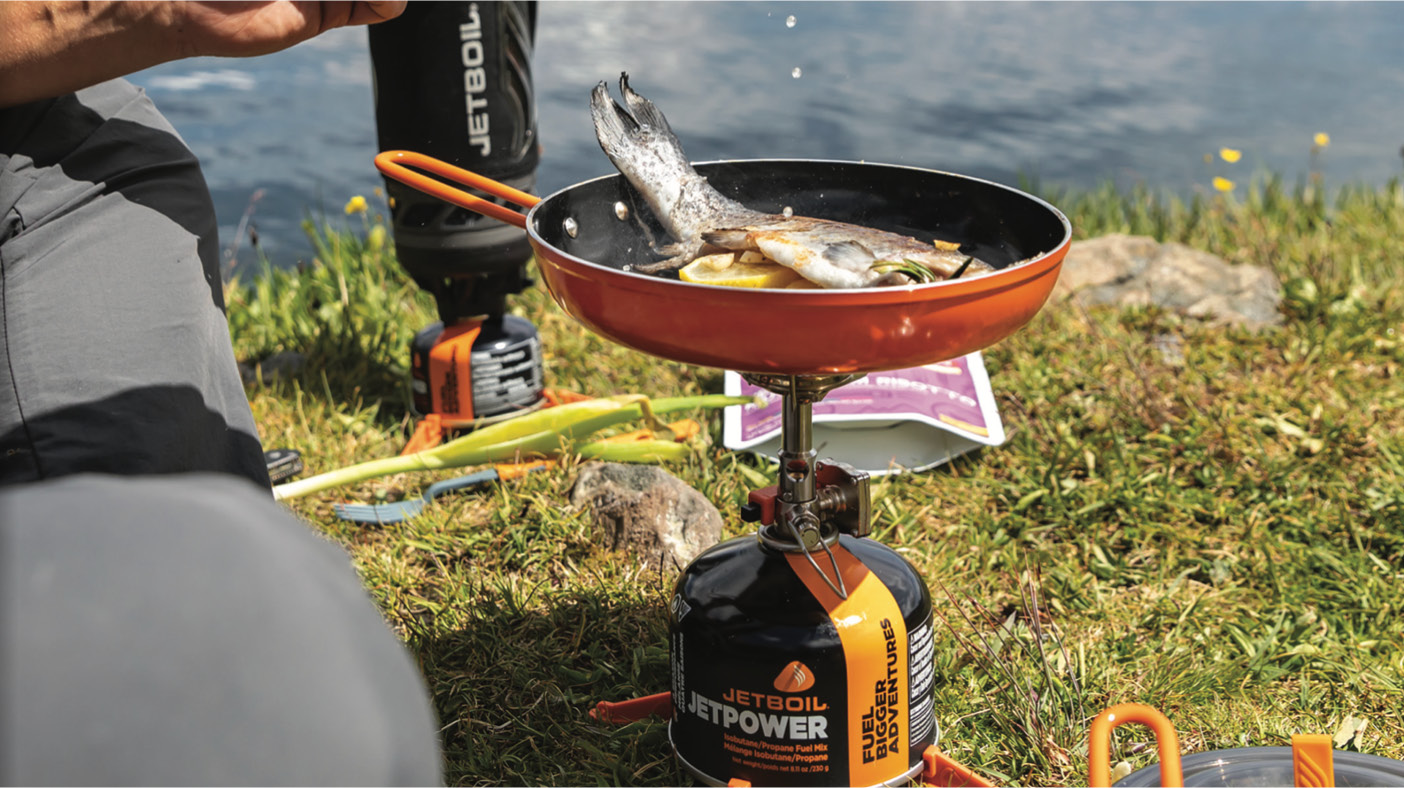Hiking and camping: what to take on your backpacking trip
Outdoor Activities | March 28, 2024
SAIL
April 22, 2022

A stove is an essential part of your camping equipment. It allows you to prepare a hot drink and a comforting meal after a beautiful day in the open air. There are many models to choose from, each with its own unique features, whether you’re on a road trip, camping trip or backcountry expedition. Here are our top tips for choosing the right stove for your needs.
In this article, you will learn about the different types of camping stoves and their characteristics in order to choose yours.
There are as many stove models as there are types of campers. So the first question to ask is: What is your camping style? Camping on a developed site or camping in the backcountry? Camping with all the comforts or minimalist and ultra-light?
If you travel mainly by car or in a converted vehicle and stay in a converted campground (private campgrounds, municipal campgrounds or national park campgrounds with a camping table), you can opt for a portable stove in the form of a suitcase with one or two burners. It is then stable and allows you to cook comfortably.
If you go hiking (on foot, by bike, in a canoe or kayak, etc.) for several days and you have to carry your stove in a backpack, you can choose a compact stove with a burner that can be screwed directly to the fuel bottle, for example. It is then light and versatile in order to cook in all circumstances in nature.
Before comparing the types of stoves online or in store, it is important to know what features differentiate them. Here are five to focus on:
1. Weight
Stoves can weigh anywhere from 50 grams (ultra-light alcohol stoves) to over 5 kilos (grill stoves). That’s why it’s important to know your transportation needs. If you plan to carry your camping equipment from the trunk of your car to the picnic table, don’t aim for weight savings and opt for stability instead. If you are a hiker and want to avoid a load on your back, choose a gas stove between 50 and 300 grams (gas, alcohol, single burner wood stove).
2. Power
Power is expressed in BTU/hour (British Thermal Unit) or in watt/hour and calculated by the time it takes a stove to boil a liter of water. The most efficient models will take less than 3 minutes to boil your pot. This does, however, require a lot of fuel consumption. Note that portable stoves with dual burners often have a high power burner and a lower power burner to heat or simmer a dish.
3. Wind sensitivity
This may seem like a secondary consideration, but cooking can be a real hassle on a mountain top when a strong breeze hits. Most portable camping models have windproof side screens to protect your cooking. Screw-on burners, on the other hand, are less effective because the pan is high and the flames are unprotected. There are accessories available for this purpose to deal with windy conditions.
4. Stability
Tired and hungry after a day spent in the great outdoors, you certainly don’t want to see your meal spill on the ground because of an unbalanced stove. It is therefore important to check the stability of the different models by testing them on all types of surfaces for example. Remote stoves (with the bottle next to the burner) are very effective for this.
5. Compactness
Like weight, compactness is an important consideration if you need to carry your equipment in your luggage rather than in your vehicle. Some ultra-compact burners are smaller than the palm of a hand and can be stored in a cup or in the recess of a gas cylinder. Ingenious, isn’t it?
The major camping gear brands (GSI, MSR, Biolite, Martin, Coleman, Jetboil, and Traeger) offer different types of stoves:
For more comfort to cook with your stove in all circumstances, some accessories are very interesting to add to your list of camping equipment: